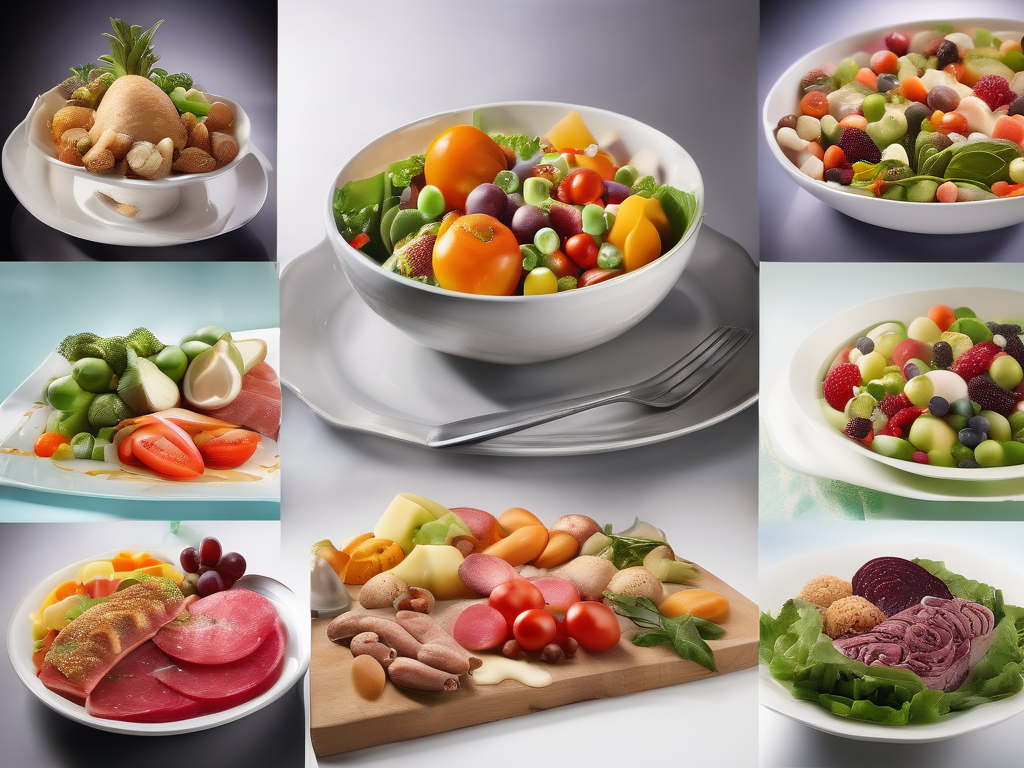
The Best Way to Store Cooked Lamb Kidneys
Get Your Free Food Safety Cheat Sheet
30 most common foods with instant answers. Print it and stick it on your fridge—completely free!
The Best Way to Store Cooked Lamb Kidneys
Lamb kidneys are a delicacy enjoyed by many for their rich flavor and tender texture. Whether you've just cooked a delicious lamb kidney dish or have leftovers from a meal, proper storage is crucial to maintain freshness and prevent foodborne illnesses. In this comprehensive guide, we will explore the best practices for storing cooked lamb kidneys to ensure they remain safe to eat and delicious.
Understanding the Importance of Proper Storage
Proper storage of cooked lamb kidneys is essential to maintain their quality and safety. Improper storage can lead to bacterial growth, spoilage, and potential foodborne illnesses. By following the right storage guidelines, you can extend the shelf life of cooked lamb kidneys and enjoy them at their best.
Factors to Consider When Storing Cooked Lamb Kidneys
When it comes to storing cooked lamb kidneys, several factors need to be taken into account to ensure their safety and quality:
-
Temperature: Cooked lamb kidneys should be stored at a safe temperature to prevent bacterial growth. The ideal temperature for storing cooked meats is below 40°F (4°C).
-
Air Exposure: Limiting air exposure is crucial to prevent oxidation and bacterial contamination. Store cooked lamb kidneys in airtight containers or wrap them tightly in plastic wrap.
-
Moisture Content: Excess moisture can lead to the growth of bacteria and mold. Ensure that cooked lamb kidneys are not stored in a wet or damp environment.
-
Storage Duration: Cooked lamb kidneys should be consumed within a certain timeframe to ensure freshness and safety. It is recommended to consume cooked meats within 3-4 days of cooking.
Best Practices for Storing Cooked Lamb Kidneys
Now that we understand the importance of proper storage, let's explore the best practices for storing cooked lamb kidneys:
1. Cool Down Properly Before Storage
Before storing cooked lamb kidneys, allow them to cool down to room temperature. Placing hot food directly in the refrigerator can raise its internal temperature and lead to bacterial growth.
2. Store in Airtight Containers
Transfer the cooked lamb kidneys to airtight containers or resealable bags to prevent air exposure and contamination. Make sure the containers are clean and dry before storing the kidneys.
3. Label and Date the Containers
To keep track of storage time and ensure freshness, label the containers with the date of storage. This will help you identify how long the cooked lamb kidneys have been stored and when they need to be consumed.
4. Place in the Refrigerator or Freezer
Cooked lamb kidneys should be stored in the refrigerator at a temperature below 40°F (4°C). Alternatively, you can freeze them for longer storage. If freezing, ensure proper wrapping to prevent freezer burn.
5. Reheating Safely
When reheating cooked lamb kidneys, ensure they are heated to an internal temperature of 165°F (74°C) to kill any bacteria present. Use a food thermometer to check the temperature and heat them thoroughly before consuming.
Safety Tips for Storing Cooked Lamb Kidneys
To ensure the safety of stored cooked lamb kidneys, here are some additional tips to keep in mind:
-
Avoid Cross-Contamination: Store cooked lamb kidneys away from raw meats and other perishable foods to prevent cross-contamination.
-
Check for Spoilage: Before consuming cooked lamb kidneys, check for any signs of spoilage such as off smells, sliminess, or discoloration. If in doubt, discard the kidneys.
-
Follow FIFO: Practice the "first in, first out" rule when storing cooked lamb kidneys. Consume older batches before newer ones to prevent food waste.
-
Thaw Properly: If frozen, thaw cooked lamb kidneys in the refrigerator or under cold running water. Do not thaw at room temperature to avoid bacterial growth.
Conclusion
Proper storage of cooked lamb kidneys is essential to maintain their quality, safety, and flavor. By following the best practices outlined in this guide, you can ensure that your cooked lamb kidneys remain delicious and safe to eat. Remember to pay attention to temperature, air exposure, moisture content, and storage duration when storing cooked meats. With the right techniques, you can enjoy your lamb kidney dishes without any worries about food safety.
Authoritative Food Safety References
These agencies and university labs inform every tip and health precaution we publish.
USDA FoodKeeper – Cold Storage Guidelines
Official refrigerator, freezer, and pantry timelines maintained by the U.S. Department of Agriculture.
Visit USDA FoodKeeperFDA Produce Safety Rule & Grower Guidance
Field-to-fridge handling practices that prevent contamination of fruits, vegetables, and leafy greens.
Visit FDA Produce SafetyCDC Foodborne Illness Prevention Hub
Surveillance-backed guidance on pathogens, symptoms, and steps to reduce foodborne illness risk.
Visit CDC Food SafetyUC Davis Postharvest Technology Center
University research detailing optimal storage atmospheres for produce after harvest.
Visit UC Davis PostharvestPenn State Extension – Home Food Preservation & Safety
Peer-reviewed extension bulletins on safe canning, chilling, and reheating practices.
Visit Penn State ExtensionGet Your Free Food Safety Cheat Sheet
30 most common foods with instant answers. Print it and stick it on your fridge—completely free! Want more? Upgrade to the complete guide with 70+ foods.
Scan your food directly and get instant safety info using our AI-powered camera feature.